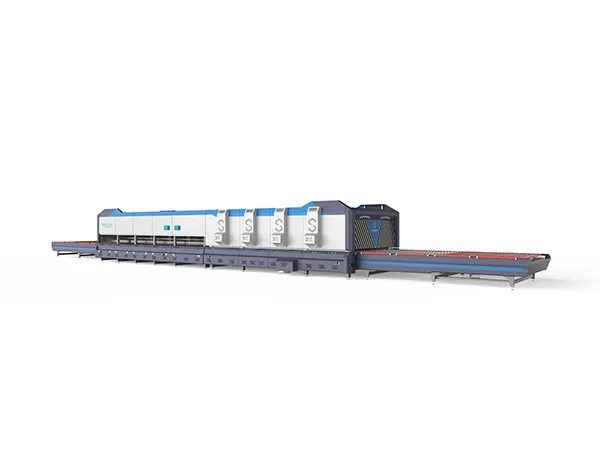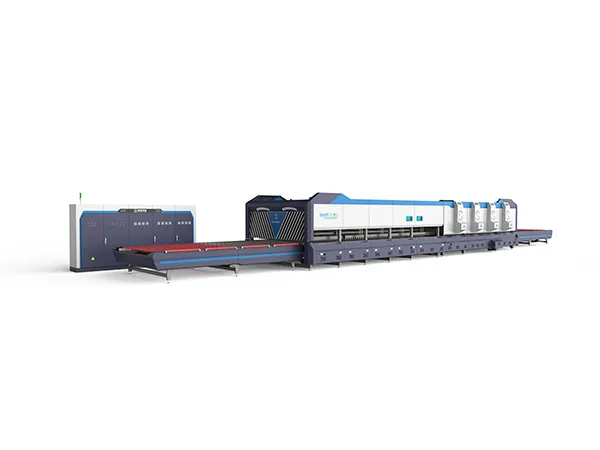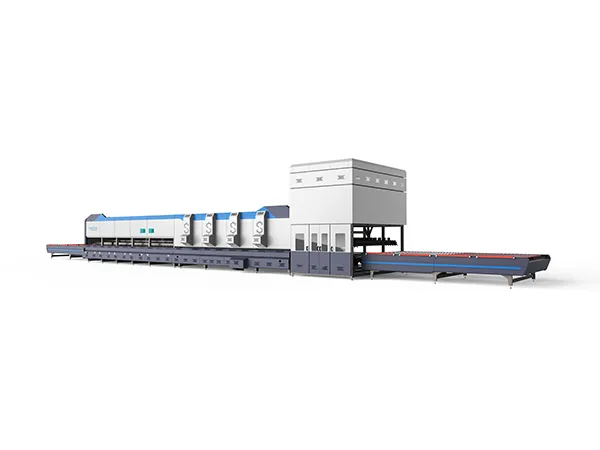Maintaining a glass tempering furnace is crucial for ensuring consistent product quality, maximizing uptime, minimizing energy consumption, and guaranteeing operator safety. It requires a systematic approach involving regular inspections, cleaning, lubrication, and calibration.
Glass Tempering Furnace Maintenance Guide
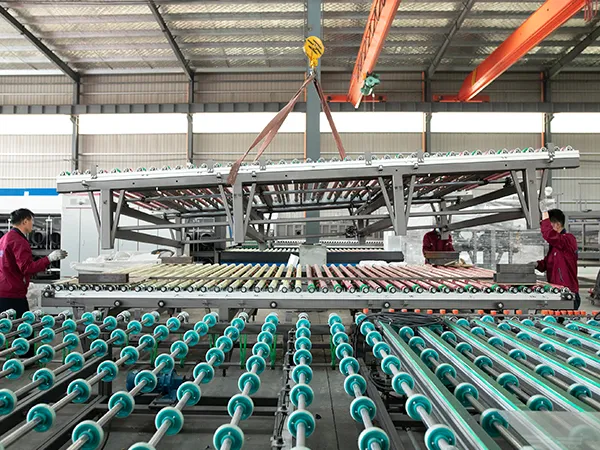
Key Principles:
Safety First: Always prioritize safety. Follow Lockout/Tagout (LOTO) procedures before any maintenance. Be aware of extreme heat, high voltage, and moving parts.
Use appropriate Personal Protective Equipment (PPE).
Follow Manufacturer's Recommendations: The furnace manufacturer's manual is the primary resource. Maintenance schedules and procedures may vary significantly between different makes and models.
Keep Detailed Records: Log all maintenance activities, inspections, repairs, and part replacements. This helps track trends, predict potential issues, and manage spare parts inventory.
Cleanliness is Key: Dust and debris can interfere with sensors, block airflow, damage components, and create fire hazards.
Maintenance Schedule Breakdown (Example - Adjust based on Manufacturer & Usage):

Daily / Per Shift:
Visual Inspection:
Check the overall condition of the furnace exterior and surrounding area.
Look for any unusual noises, vibrations, or smells during operation.
Check control panel indicators, alarms, and temperature readings for normalcy.
Inspect loading and unloading areas for debris or obstructions.
Check quench section airflow (listen for consistency, check pressure gauges if available).
Visually inspect rollers (loading, heating, quenching, unloading) for obvious damage or debris.
Basic Cleaning:
Clean glass fragments and dust from loading/unloading areas.
Wipe down control panels and operator interfaces.
Weekly:
Roller Inspection & Cleaning:
Inspect rollers more closely for wear, cracks, contamination (glass buildup), or distortion.
Clean rollers according to manufacturer recommendations (often requires specific procedures when hot or cold). Kevlar/ceramic rollers need careful handling.
Conveyor System Check:
Inspect drive belts/chains for proper tension, wear, and alignment.
Listen to drive motors and gearboxes for unusual noises.
Quench Section Check:
Check blower intake filters and clean/replace as needed. Clogged filters drastically reduce efficiency.
Visually inspect quench nozzles (if accessible) for blockages or damage.
Sensor Check:
Visually inspect thermocouples and pyrometers for position and damage.
Check basic sensor readings against known good values or historical data.
Lubrication (If Applicable):
Lubricate specific points (bearings, chains) as per the manufacturer's schedule and lubricant type. Avoid over-lubrication.
Monthly:
Heating Chamber Inspection (When Cold & Safe):
Inspect heating elements for sagging, breakage, corrosion, or connection issues. Check resistance if possible/recommended.
Inspect insulation (ceramic fiber, firebricks) for cracks, sagging, or deterioration. Dusting can indicate breakdown.
Check thermocouple condition and mounting security.
Quench System Deeper Check:
Thoroughly inspect blower impellers for buildup or damage (requires safe access).
Check quench plenum and ductwork for leaks or obstructions.
Verify damper operation (if applicable).
Drive System Check:
Check motor bearings for noise/vibration.
Inspect gearbox oil levels and condition (if applicable).
Check couplings between motors and drives.
Electrical Connections:
Visually inspect main power connections, control panel wiring, and element connections for tightness and signs of overheating (discoloration). Perform only when power is locked out.
Pneumatic/Hydraulic Systems (If Applicable):
Check for air/oil leaks, check pressure levels, inspect filters.
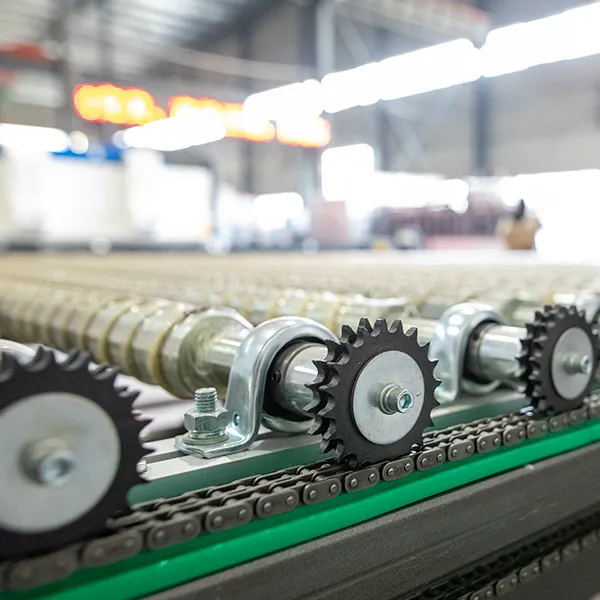
Quarterly / Semi-Annually:
Thermocouple Calibration/Verification:
Check the accuracy of critical thermocouples using calibrated instruments or compare redundant sensors. Replace if out of tolerance or nearing end-of-life.
Blower Motor Maintenance:
Lubricate motor bearings according to manufacturer specs.
Check electrical connections at the motor terminal box.
Control System Check:
Backup PLC program and HMI configuration.
Check cooling fans for control cabinets.
Review alarm history logs for recurring issues.
Safety System Check:
Test emergency stops, door interlocks, and other safety devices.
Annually (Often during a planned shutdown):
Thorough Furnace Interior Inspection (Cold):
Detailed inspection of insulation, refractories, and hearth. Repair/replace as needed.
Comprehensive check of all heating elements.
Inspect furnace steel structure for distortion or corrosion.
Major Component Overhaul:
Consider predictive maintenance like vibration analysis on blowers and drives.
Inspect gearbox internals if indicated by oil analysis or noise.
Overhaul or replace high-wear components based on condition and history.
Full System Calibration:
Calibrate all critical sensors (thermocouples, pyrometers, pressure sensors).
Calibrate drive speeds.
Quench System Cleaning:
Thorough cleaning of quench nozzles, plenum, and ductwork.
Electrical System PM:
Thermographic inspection of electrical panels and connections under load (by qualified personnel).
Clean electrical cabinets.
Test protective relays and circuit breakers.
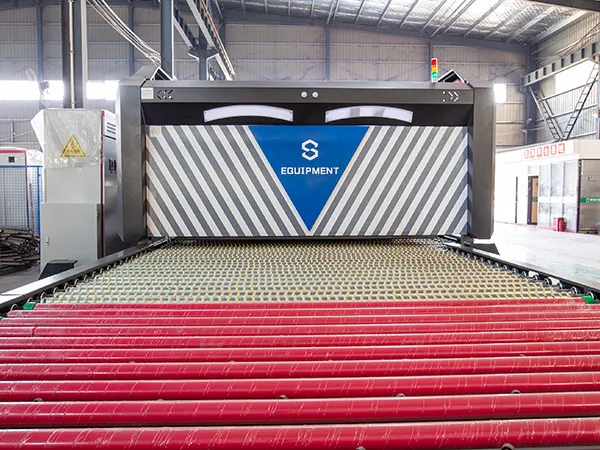
Key Areas Requiring Special Attention:
Rollers: Critical for glass quality (optical distortion, marking). Keep clean and replace when worn/damaged.
Heating Elements: Ensure even heating. Monitor for signs of aging.
Insulation: Crucial for energy efficiency and temperature uniformity. Degraded insulation increases costs and affects quality.
Thermocouples/Pyrometers: Accurate temperature measurement is vital for the tempering process. Regular calibration/replacement is essential.
Quench Blowers & Nozzles: Proper airflow volume and distribution are critical for achieving desired temper stress. Keep filters clean and nozzles unobstructed.
By implementing a consistent and thorough maintenance program based on the manufacturer's guidelines and these general principles, you can ensure your glass tempering furnace operates safely, efficiently, and produces high-quality tempered glass for years to come.








